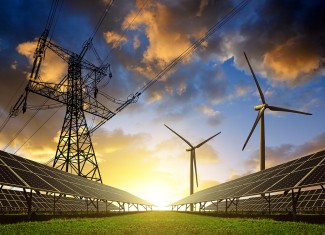Utility-run programs focused solely on saving energy often miss vital opportunities to support decarbonization. A new report describes how states and utilities can ensure efficiency programs adopt climate-related impact metrics and track their progress.
Utility initiatives to help customers make energy-saving improvements have quietly helped curb greenhouse gas emissions for decades. However, these programs could do far more to help homes and businesses decarbonize.
A new ACEEE report provides recommendations for state legislators and utility regulators to expand the scale and scope of utility energy efficiency programs to better address today’s climate challenge, including strategies to quantify and value emissions reductions achieved by the programs.
Programs focused only on energy savings won’t maximize GHG reductions
Most of today’s energy efficiency programs are designed with saving energy as their primary (or only) goal and, as a result, often miss important decarbonization opportunities. Through these existing programs, states and utilities can target greenhouse gas (GHG) emissions reductions in three main ways. They can:
- Set GHG reduction goals
- Set goals in terms of quantities that are correlated with GHG reduction (e.g., combined electricity and gas energy savings)
- Provide financial signals or incentives that drive utilities toward decarbonization.
Programs today rarely optimize the timing of energy savings, though doing so would help them achieve the most significant climate benefit. For example, saving energy produced at a time of day or year when the power grid draws heavily from coal plants does far more to reduce emissions than saving energy when there is excess wind or solar power. If programs prioritized climate goals alongside energy savings, they could do more to boost electrification, offering customers incentives to adopt efficient electric appliances and equipment. Some utility programs today are actually prohibited by law from encouraging electrification. No utility’s efficiency portfolio fully optimizes for GHG reduction.
Smart state policies can ensure utilities adopt a climate-forward approach
Progress to date in updating efficiency programs to combat climate change has primarily been driven by state policy and decarbonization plans. State laws supporting these efforts include provisions
- Explicitly establishing electrification programs (e.g., CO, IL, MA, MN, NY, VT)
- Phasing out rebates for gas-fired appliances (e.g., CO, MA)
- Requiring GHG reduction to be a component of utility energy-saving goals (e.g., DC, MA, MD)
- Requiring the state to develop plans to achieve a fuel-neutral energy savings target (e.g., NY)
- Require public utility commissions to consider reducing GHGs as part of their regulatory duties (e.g., VT, NY)
States that have not yet done so should enact laws establishing climate targets—for themselves and utilities—and clarify that the responsibilities of their public utility commissions should include decarbonization. Utility regulators should only approve utility efficiency plans and budgets aligned with their decarbonization commitments.
Clarity is vital, as vague language that instructs utilities and commissions to prioritize “environmental benefits,” for example, may not provide efficiency programs with sufficient legal justification for targeting GHG reductions.
States can choose methods for tracking emissions reductions that best suit their needs
To evaluate and improve their efforts toward meeting climate goals, utility programs need to adopt a method to calculate their emission-reduction impacts. There’s no single best way to quantify the carbon intensity of electricity not consumed. A common metric used to do so is the “emission rate,” or the amount of GHG avoided per unit of energy saved. There are multiple ways to calculate emission rates, and each may be more appropriate for some use cases than others.
Accounting for the short- and long-term impacts of measures implemented today is critical. Electrification, which adds electric load while reducing fossil fuel end use, will result in more GHG reductions as the grid decarbonizes in coming years. One approach we generally encourage is for utilities to develop a generation dispatch model for a utility service territory based on a forecast of what load would be with and without energy efficiency, such as is embedded into California’s Avoided Cost Calculator and the National Renewable Energy Laboratory’s Cambium dataset.
In general, it is more accurate to evaluate the emissions benefits of energy efficiency by considering the impact it has on marginal generators (i.e., those that ramp up or down in response to incremental changes in demand) than all generators operating on the grid at any point in time (the latter is reflected in an average emission rate). However, states may choose, as Massachusetts has done, to use average emissions rates if that helps maintain alignment with how other sectors of the state economy measure their GHG impacts. States and utilities can also choose the time granularity of their emission rates. Early indications suggest that more granular data (e.g., hourly) are needed when the grid’s carbon intensity or energy savings are highly variable, or when carbon intensity and energy savings are highly correlated.
Programs should continue to value efficiency’s other benefits even as they expand their climate focus
Energy efficiency provides various benefits that aren’t related to emissions, such as cutting utility bills, enhancing grid reliability, and reducing the need for transmission and distribution system upgrades. Relying exclusively on a GHG reduction metric could cause programs to fail to value and thus deliver these additional benefits.
Instead, it’s time to adopt multiple objectives for utility efficiency programs. We can continue to reap the benefits of energy efficiency even as we unleash a powerful tool to combat climate change. As the climate crisis accelerates, we urgently need programs optimized to accomplish both.

